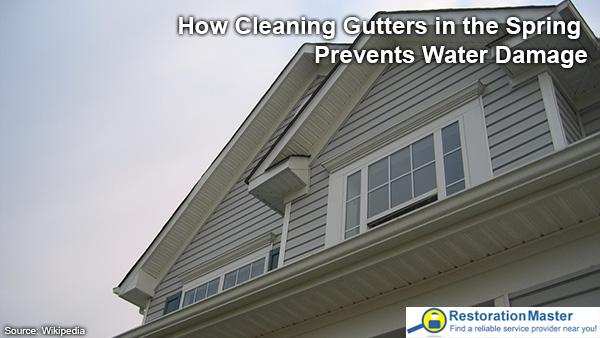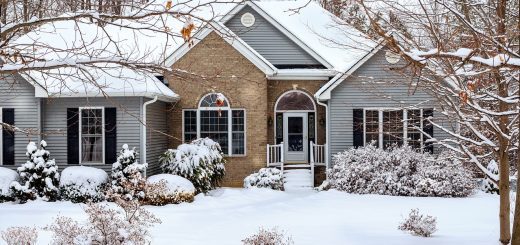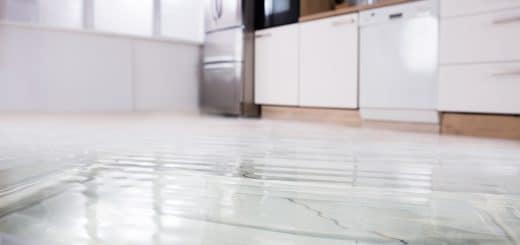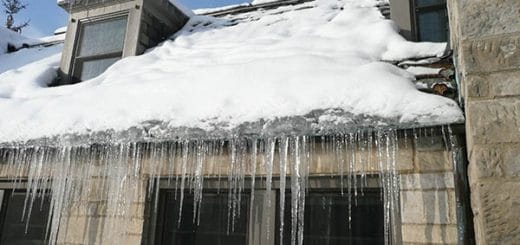The Main Sources of Moisture in your Basement
When you have moisture issues in your basement, it can leadLead is a heavy metal that can be toxic to humans, especiall... More to significant damage and threaten your health. Excess water and moisture can get absorbed into surrounding porousPorous describes a material that contains small openings or ... More building materials and furnishings which can result in severe damage of these materials. Moisture can also create moldMold is a type of fungus that grows in damp or humid conditi... More and mildewMildew is a type of fungus that grows on damp surfaces, typi... More which can grow beneath the wall and in the carpet and damage your furniture and other materials. It is best to solve basement water issues quickly and efficiently because the longer you leave them, the worse they will become.
If you have a moisture problem in the basement, you need to figure out where the moisture is coming from first and then fix it. You also need to prevent future moisture problems by making sure that it is not caused by poor construction, settling foundation, liquid from rainwater, moisture from clothes dryers, bathrooms, or cooking, as moisture damage from any of these sources can be prevented with proper maintenanceMaintenance is the routine care, inspection, and repair of a... More.
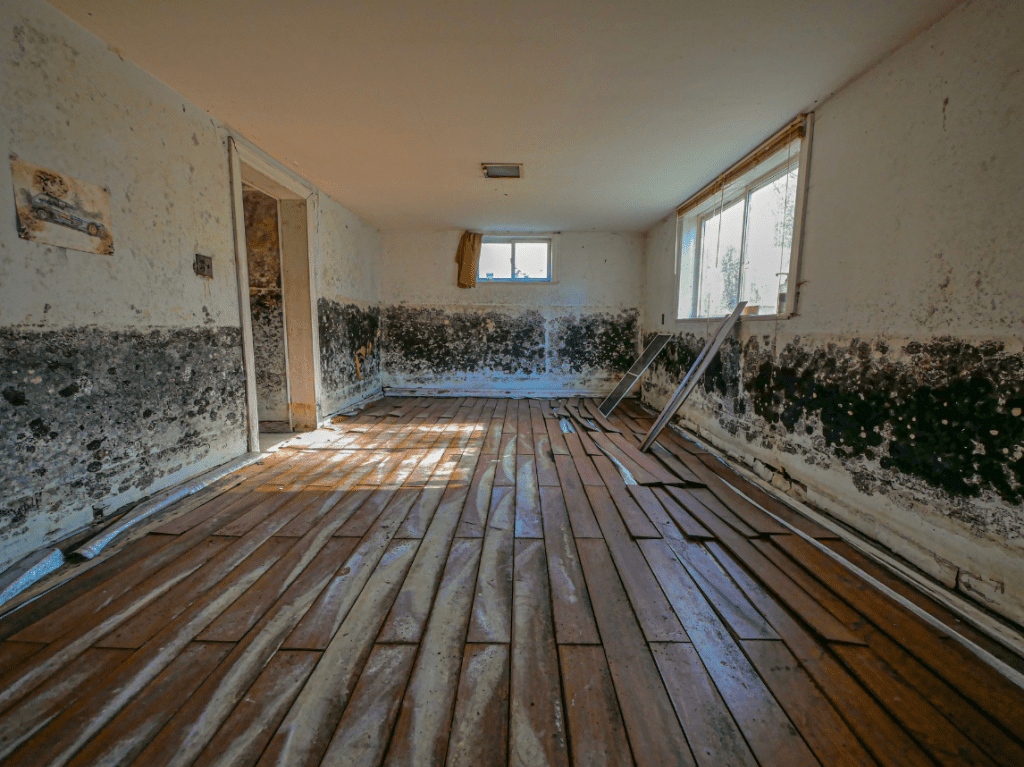
MoldMold is a type of fungus that grows in damp or humid conditi... More in the basement
Common Causes of Basement Moisture
The following are the most common signs of moisture in the basement:
- MoldMold is a type of fungus that grows in damp or humid conditi... More and mildewMildew is a type of fungus that grows on damp surfaces, typi... More
- Staining on walls and floors
- White powder on concrete and brick walls
- Damage to the drywall such as blistering and sagging
- Rusting of pipes and plumbing
Moisture inside of a basement can come from various sources. It can come from humidifiers, clothes dryers that do not vent well, showering, and even cooking. When a basement is finished, there can even be a higher chance for moisture to get through different materials and cause mold and mildew. At times, moisture can be contained in concrete after construction, and even from exterior humid air that enters the basement and condenses on cooler surfaces.
Exterior Factors
There are various exterior factors that can cause moisture in basements. One of them is rainwater. Water can easily seep into the basement when it rains for a few reasons:
- If the soil around the house has too much water in it, for example after a heavy rain. The water in the soil will create pressure on your walls and floor.
- Rainwater can get through the joints where the poured concrete floor meets the wall.
- Rain can get inside the basement if there are cracks in the mortar joints of the foundation walls.
- Sometimes basements have poorly installed windows and rain can get inside that way. Also, window tracks can get filled with water during heavy rains and spill over can happen onto your basement walls.
It is extremely important to have clean gutters and downspout systems to protect your house from precipitation. When gutters are clogged and dirty, they will overflow which can cause pooling around your foundation. Make sure to remove any leaves and debris from the gutters, and to keep them clean, install leaf guards. To keep water away from the foundation, attach a sloped downspout to each gutter and keep water at least 10 feet from the foundation. When water accumulates around the foundation of your property, it exerts hydrostatic pressure which can cause cracks in the basement walls which can leadLead is a heavy metal that can be toxic to humans, especiall... More to leaks or structural damage. Therefore, it is best to have proper drainage which will protect your foundation and that is best done by keeping gutters and downspouts clear of debris.
GroundwaterGroundwater is water that exists beneath the earth’s surfa... More can cause moisture in your basement due to liquid water flow and capillary suction. When groundwaterGroundwater is water that exists beneath the earth’s surfa... More levels rise due to heavy rain or snowmelt, it causes pressure that pushes moisture into the cracks or the gaps in foundation, which can cause water to seep in through the basement floor.
Sump pumps and French drains are both effective systems of drainage, however, they do have some differences:
- French drains are best for diverting water from the foundation and low-lying areas of yards.
- Sump pumps handle more water by volume, while French drains work all the time.
Whether you choose a French drain or a sump pumpA sump pump is a pump installed in a basement or crawlspace ... More will depend on your location and the conditions at that location.
Condensation
Condensation happens when warm and moist air meets a cooler surface such as the walls of the basement. When there is a temperature difference in the air between the basement and the outside, it can cause condensation. Once the walls cool the air, the droplets will form on the walls, and you will have a wet basement.
There are several ways you can control condensation in your basement, here are a few:
- Properly ventilate your home so that it has good airflow.
- Use a dehumidifierA dehumidifier is a device that removes excess moisture from... More to lower the amount of water in the air.
- Fix any cracks in your walls to stop the moisture from entering it.
- Insulate your basement walls so that the temperature can be regulated which can prevent condensation.
- The humidityHumidity is the amount of moisture or water vapor present in... More in your home should be low, usually between 30 and 50%.
Plumbing Leaks
There is always a chance that you will have leaking pipes or even faulty plumbing in the basement. These problems can be caused by various factors such as rustRust is a reddish-brown oxide that forms on iron or steel du... More and corrosion, clogged pipelines, and leaks from pipes that travel to fixtures and appliances. It is very important to figure out the location of the leak and the best action to take. It is always best to contact a professional plumber if you are not able to fix it.
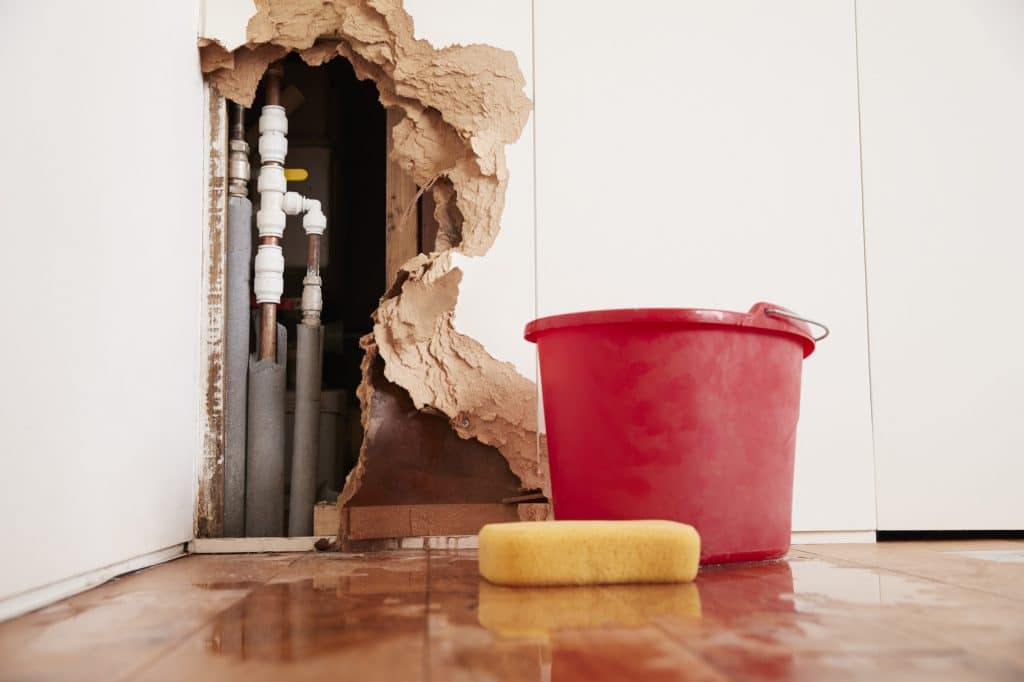
Here are a few tips for quickly identifying plumbing issues:
- Check if there are leaks: Leaks can cause water damage and even increase your water bill. You should check for leaks in pipes, faucets, and even showerheads. If there are leaks found, they need to be fixed quickly.
- Look at your water pressure: If you are experiencing low water pressure, there might be clogged pipes or even a malfunctioning pressure regulator. If you notice that your water pressure is low, it is important to find the cause and fix it right away.
- Check if there are clogs: Clogs can cause slow drainage in the sink and toilets. If you see that your sink or toilet are draining slowly, try to use a plunger or drain cleaner to get the clog removed.
- Call a professional if needed: At times, a plumbing issue requires the help of a professional plumber. If you are unsure how to fix a specific issue or are not comfortable working with plumbing systems, it is always best to call a professional plumber.
- Do maintenanceMaintenance is the routine care, inspection, and repair of a... More regularly: It is important to do regular maintenanceMaintenance is the routine care, inspection, and repair of a... More so that you can prevent plumbing issues. You should clean your drains regularly and have your plumbing system inspected by a professional plumber at least once per year.
Foundation Cracks and Seepage
Two major things that can contribute to moisture in your basement are foundation cracks and seepageSeepage is the slow movement of water or other fluids throug... More. Both are preventable by doing proper maintenanceMaintenance is the routine care, inspection, and repair of a... More and repairs around your home.
Cracks in your foundation can let water come into your basement. Water will get the soil under the foundation wet and create hydrostatic pressure against the foundation walls. Once the hydrostatic pressure increases, the walls can push inward, crack and bow. Then the water will seep in through the cracks and wall joints, which will create puddles with standing water in your basement.
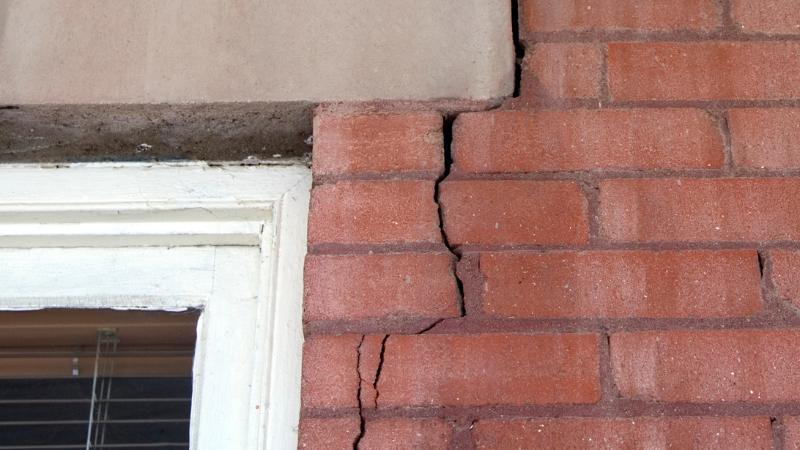
It is very important to do inspections and repairs regularly as it will help keep your home safe and secure. When you do regular inspections, it will help you find moisture issues and damage and make sure that the structural integrity of your property’s foundation is good. A contractor who is qualified in this type of work can let you know during the inspectionInspection is the careful examination and assessment of a pr... More if they find any issues with damage, cracks, bulges, and uneven settling. When you find the issue early, it can help you avoid more costly damage later. There are various areas where the contractor will look to make sure there are no leaks or moisture. They will make sure to look for horizontal, vertical, diagonal, and even stair-step cracks in the foundation and the walls. They will also find out if there are any strange odors. If your home has a sump pumpA sump pump is a pump installed in a basement or crawlspace ... More, they will look at that as well.
You can experience seepage in the basement through walls and floors. This can be caused by broken pipes, clogged drains, mortar joints, floor cracks, and more. Water sometimes enters through the wall or floor cracks. It can also seep through porousPorous describes a material that contains small openings or ... More concrete or masonryMasonry is the craft or construction of structures using mat... More walls as water vaporVapor is the gaseous form of a substance that is typically l... More. Usually, basement seepageSeepage is the slow movement of water or other fluids throug... More is caused by hydrostatic pressure. This is when the water table rises above the level of the basement floor, creating pressure on the foundation walls and causing water to seep through the gaps.
Water can easily seep through porousPorous describes a material that contains small openings or ... More concrete or masonryMasonry is the craft or construction of structures using mat... More. Sealing the concrete slab with waterproofingWaterproofing is the application of materials or coatings de... More masonryMasonry is the craft or construction of structures using mat... More sealer is the best way to prevent seepageSeepage is the slow movement of water or other fluids throug... More post rainfall. You can also add an asphalt-based sealant to the outside of the foundation to keep water out and protect your home from further damage.
High Humidity and Poor Ventilation
Two major ways in which basements become moist are through high humidityHumidity is the amount of moisture or water vapor present in... More and poor ventilationVentilation is the process of exchanging or circulating air ... More. High humidityHumidity is the amount of moisture or water vapor present in... More can be caused due to the weather in the area you live in. Poor ventilationVentilation is the process of exchanging or circulating air ... More can be created due to cooking, showering, and even from clothes dryers.
High humidity in your home can cause moisture-related issues. HumidityHumidity is the amount of moisture or water vapor present in... More refers to the amount of water vaporVapor is the gaseous form of a substance that is typically l... More in the air. When the air is very humid, it can hold more moisture than when it is dry. This can cause condensation on surfaces and walls which can leadLead is a heavy metal that can be toxic to humans, especiall... More to damage and moldMold is a type of fungus that grows in damp or humid conditi... More and mildewMildew is a type of fungus that grows on damp surfaces, typi... More growth. When the air is too humid, it also causes an increase in the rate of harmful chemicals in the air. Humid air can cause the growth of dust mites which thrive at humidityHumidity is the amount of moisture or water vapor present in... More of 70-80 % and can cause asthma attacks.
It is important to control the humidityHumidity is the amount of moisture or water vapor present in... More levels in your basement. Here are a few tips on what you should do:
- Fix leaks around your home: If you have plumbing issues, they may cause humidityHumidity is the amount of moisture or water vapor present in... More in your basement. Make sure to check for leaky pipes, toilets, and other plumbing leaks. They can cause moisture in your home that will drip down in your basement, creating dampness.
- Use the proper exhaust fans in bathrooms and kitchens: Taking very hot showers and cooking can increase the humidityHumidity is the amount of moisture or water vapor present in... More in your basement. Make sure that your exhaust fans are always running in the bathroom when you are bathing and, in the kitchen, when you are cooking.
- Have a dryer vent installed: Dryers produce a lot of moisture as it evaporates from the clothing items as they dry. To keep moisture out of your basement, make sure you have a proper vent installed so that it can vent the moisture outside.
- Your gutters should be cleaned regularly: External water is what can cause moisture in your basement. This usually happens because your gutters or downspouts are clogged.
- Maintain your sump pumpA sump pump is a pump installed in a basement or crawlspace ... More: These need to be regularly checked to ensure they are working properly.
- Cover dirt basement floors: If your basement floors are made of dirt, make sure to cover them with plastic sheeting to keep moisture from seeping up through the floor.
A properly ventilated space helps prevent moldMold is a type of fungus that grows in damp or humid conditi... More and moisture as the air circulation reduces humidityHumidity is the amount of moisture or water vapor present in... More. Once fresh air comes into your home, it will replace the stale air that may have extra moisture. Also, when you have a good exchange of indoor and outdoor air, it helps reduce the risk of moldMold is a type of fungus that grows in damp or humid conditi... More growth and other issues.

Use fans to dry areas affected by moldMold is a type of fungus that grows in damp or humid conditi... More and water damage
You should always try to improve the ventilationVentilation is the process of exchanging or circulating air ... More in your basement. Here are a few ways:
- Open windows and doors
- Have vents installed that will help bring in fresh air and help it circulate between the rooms
- Get an air purifier
- Keep your basement dehumidified
- Use fans to circulate air inside
Improper Landscaping and Grading
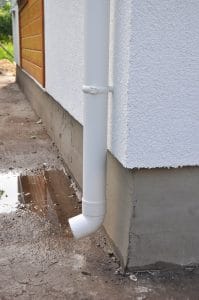
Proper positioning of your down spouts can help prevent floodingFlooding is the overflow or accumulation of water in areas t... More in your basement by directing water away from your house
When it comes to landscaping, it is important to have it done properly otherwise you may end up with seeping water in your basement which can cause major damage. Also, if your grading is done improperly, it can cause water to go toward your foundation, causing issues over time that can become costly.
When your landscape slope is done improperly, it can cause erosion which can leadLead is a heavy metal that can be toxic to humans, especiall... More to water damage in your home, especially if the water collects near the foundation. Erosion can wash away the soil around the foundation and in extreme cases it can weaken the foundation which can make the house unstable.
There are some ways you can grade your yard around your foundation. Here is what you can do:
- Measure the slope of your lawn
- Check for pipes and vents
- Use the right soil
- Distribute soil carefully around the foundation of the home
- Replant
Another thing you can do is add grading topsoil around your house to fix any negative grading around the foundation of your house. Grading your yard properly can make a huge difference between runoffRunoff is water from rain or other sources that flows over s... More that flows away from the home or the water pooling around the foundation which can cause major issues.
Nearby Bodies of Water and Flooding
If you live near bodies of water, you can experience floodingFlooding is the overflow or accumulation of water in areas t... More in your basement more frequently as once the water rises to the level of your basement, it can seep into hairline cracks.
Living near lakes, rivers, and ponds can increase your moisture levels and you may be more prone to flooding and water damage. Also, the US Environmental Protection Agency says that freshwater rivers, lakes, and ponds are sensitive to phosphorus contaminationContamination is the presence of harmful or unwanted substan... More from failing septic systems. This can create an increase in algae growth and other issues with water quality.
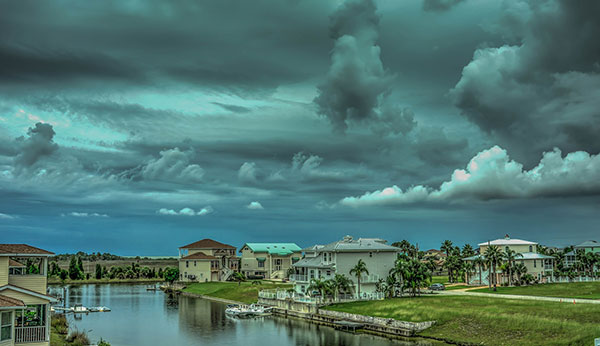
Be aware! A tempest is coming your way.
There are ways that you can mitigateTo mitigate is to reduce or limit the severity of damage, ri... More the impact of nearby bodies of water on your basement:
- Figure out where the water is coming from so you can stop the leak. Since basements are below-grade spaces surrounded by soil, moisture from the soil can cause humidityHumidity is the amount of moisture or water vapor present in... More, dampness, and condensation. You can adjust your heating, ventilationVentilation is the process of exchanging or circulating air ... More, or your HVAC system, or use a dehumidifierA dehumidifier is a device that removes excess moisture from... More.
- Get rid of the source of the water so that the soil does not oversaturate and ruin your foundation, cause damage to the walls and household items, or cause moldMold is a type of fungus that grows in damp or humid conditi... More and mildewMildew is a type of fungus that grows on damp surfaces, typi... More.
- Damp proofing is used as a capillary suction moisture break on concrete walls. This is usually done if there is a lot of water identified before a basement is constructed. This acts as a “water proofing” membrane.
Heavy rain can cause floodingFlooding is the overflow or accumulation of water in areas t... More in your basement, and this is usually due to water pooling around your home’s foundation. This is very dangerous as over time, the water can weaken your foundation which can damage your home structurally. When there is a large amount of water, it can overwhelm the drainage system of your home. Usually, this happens when there is a lot of rainfall, causing the water to seep into your basement through the cracks in the foundation.
To prevent flooding during storms, you should ensure that your landscape is graded away from the house, your gutters are cleaned multiple times a year, and your windows and exterior vents are well-sealed. Finally, you should maintain your sump pumps and drains so that water does not build up in the basement during rainfall.
DIY Moisture Prevention and Maintenance
Moisture preventionPrevention refers to actions taken to reduce the likelihood ... More in your basement is extremely important. Just by doing a few things yourself to maintain your home, you can prevent moisture issues in your basement that can cause great damage to your home.
Gutter Maintenance
You should make sure to keep your gutters clean as it will ensure that your home does not get damaged.
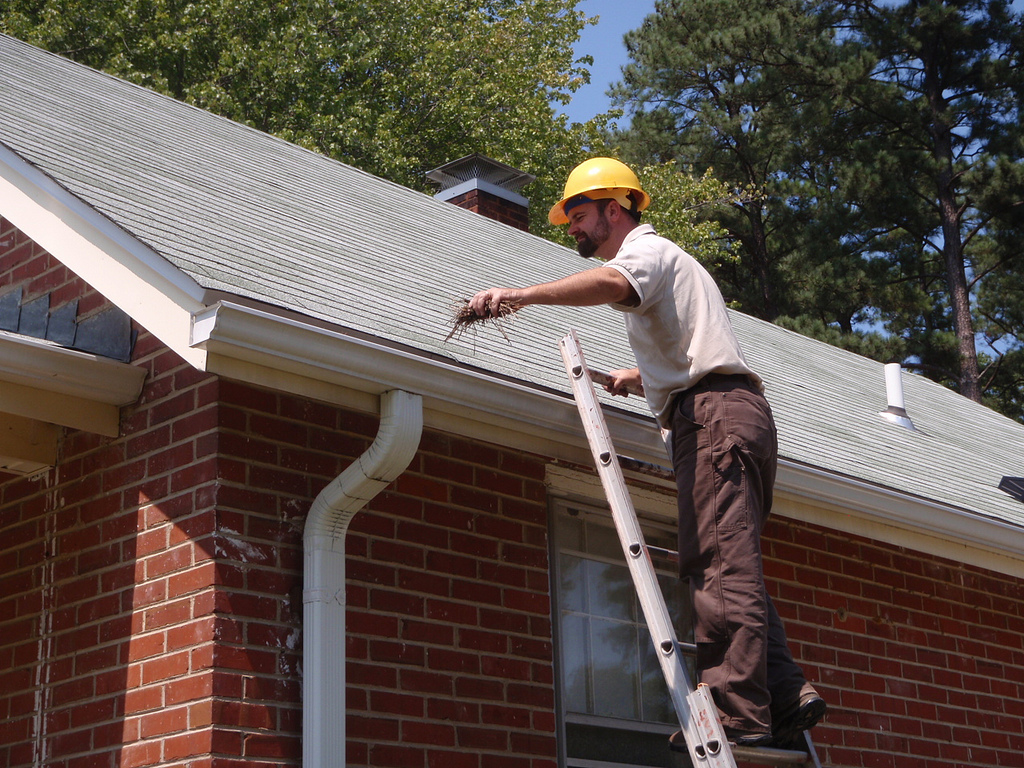
Here are some reasons why it is important to keep your gutters clean:
- You will prevent water damage around the windows and doors which can cause structural damage.
- It will help the gutters last longer, especially if you live in an area that has a lot of rain.
- It will help prevent roof damage, protect exterior walls, and prevent cracks in the foundation.
Your gutters should be maintained and cleaned regularly. Here are some tips:
- Your gutters should be cleaned at least twice a year, in the spring and in the fall.
- You can remove dirt, leaves, and debris by hand. Just use a bucket, a gutter scoop, and gloves.
- You can also flush the gutters and downspout with water for all the dirt to be cleaned.
- To get any stubborn grime or stains, you can use a power washer or a scrub brush.
- Keep your gutters clean by installing a gutter cover, helmet, or a guard so you can prevent clogging.
Sealing Cracks and Gaps
If you have cracks and gaps in your foundation, it is important to get them filled quickly so that you do not end up with moisture in your basement that can cause further damage.
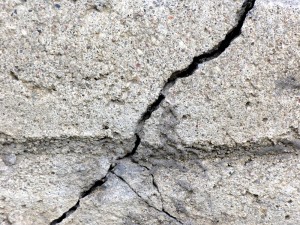
Here are the steps to follow for sealing foundation cracks and gaps:
- Identify the type of crack: Before you begin, make sure to identify the type of crack. This will help you figure out the best way to fix it.
- Clean the crack: You can use a wire brush or chisel to get rid of any loose debris or concrete from the crack.
- Fill the crack: You can use a concrete patching compound of hydraulic cement to fill the crack.
- Seal the crack: Apply a concrete sealer to the crack using a brush or roller. This will help prevent water from entering the crack and causing further damage.
- Monitor the crack: Once the crack has been sealed, make sure to monitor it for any signs of damage. If you notice, there are additional cracks or movement, contact a professional.
Dehumidifiers and Moisture Absorbers
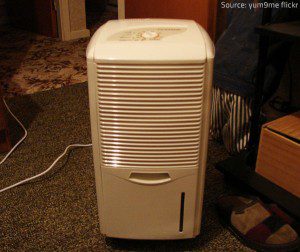
Dehumidifiers not only eliminate dampness, but also help you improve your health and the overall condition of your home.
Using dehumidifiers and moisture absorbers will help your basement stay free of moisture. Here are a few ways they help:
- Control humidityHumidity is the amount of moisture or water vapor present in... More levels and prevent moisture on walls and wood
- Stop moldMold is a type of fungus that grows in damp or humid conditi... More and mildewMildew is a type of fungus that grows on damp surfaces, typi... More growth
- Get rid of musty odors
- Help prevent moldMold is a type of fungus that grows in damp or humid conditi... More sporesSpores are microscopic reproductive units of fungi or mold t... More from entering the air
- Protect your basement and belongings from moisture damage
There are various things you should look at when choosing a dehumidifierA dehumidifier is a device that removes excess moisture from... More or a moisture absorber. Here are the factors you should consider before purchasing one:
- Size: You should choose a unit that is appropriate for the size of your space.
- Capacity: You should choose a unit that has a high capacity for getting rid of moisture. This makes it more effective.
- Drainage: You should always check the drainage method of your dehumidifierA dehumidifier is a device that removes excess moisture from... More.
- Type of air filter: There are some dehumidifiers on the market that are fitted with filters so they can trap large particles like dust and debris.
- Built in humidistat: You should get a dehumidifierA dehumidifier is a device that removes excess moisture from... More with a humidistat.
Professional Solutions and When to Seek Help
If you’ve tried to fix the moisture issue in your basement and you haven’t been able to do it yourself, it is time to call the water damage restoration professionals.
Consultation with Waterproofing Experts
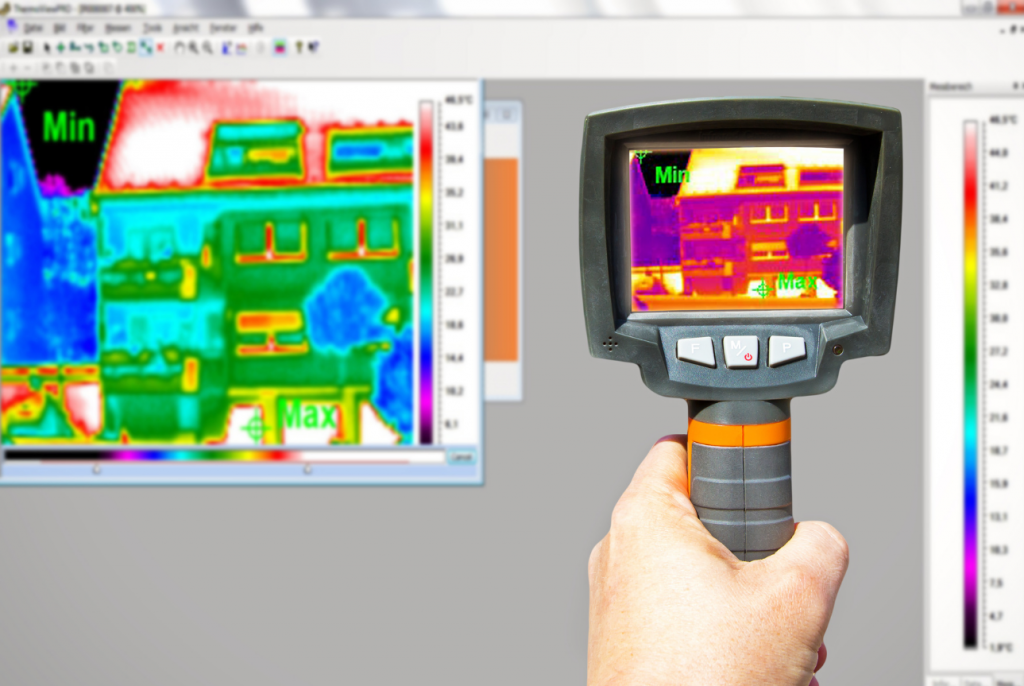
Detect Water Damage in Your Home with an Infrared Camera
If you are dealing with basement moisture issues, it is best to consult professionals when you see these signs:
- Water damage
- Cracks in the foundation
- Damage from pests
- Damage to the insulationInsulation is a material used in buildings to reduce the tra... More
- Strange odors
Water damage restoration technicians can help you figure out where the moisture is coming from in your basement and eliminate it. Make sure to call basement waterproofingWaterproofing is the application of materials or coatings de... More experts or even a general contractor that has experience with basement water damage.
WaterproofingWaterproofing is the application of materials or coatings de... More experts offer a full range of services that help you prevent water damage in your basement. Some of these services include basement waterproofingWaterproofing is the application of materials or coatings de... More, foundation repairRepair is the act of fixing or restoring damaged property, m... More, crawl space encapsulation, sump pumpA sump pump is a pump installed in a basement or crawlspace ... More installation and repairRepair is the act of fixing or restoring damaged property, m... More, and mold remediation.
Foundation Repair and Waterproofing
If you notice that you have foundation issues, they should be addressed quickly so that they do not affect the safety and stability of your house. When you have a small issue, they just become worse over time. If you notice uneven floors or badly fitting doors, foundation issues could be to blame. Some warning signs of foundation damage include:
- Cracks in walls, floor, or molding
- Sagging
- Deterioration
It is very important to find the cause of the moisture problem right away so that you can prevent any structural damage. There are a few methods for waterproofingWaterproofing is the application of materials or coatings de... More including sealants, injections, and exterior drainage systems. The most effective waterproofingWaterproofing is the application of materials or coatings de... More solutionA solution is a homogeneous mixture of two or more substance... More to fix leaks in the foundation in your home is exterior waterproofingWaterproofing is the application of materials or coatings de... More. If you have basic cracks, it is important to perform basement foundation maintenanceMaintenance is the routine care, inspection, and repair of a... More and implement effective waterproofingWaterproofing is the application of materials or coatings de... More techniques such as slab jacking which will help protect your property from future damage. If you have water damage that is causing additional damage to your foundation, waterproofingWaterproofing is the application of materials or coatings de... More the foundation will help prevent further damage. The best way to waterproof this is to install a drainage system or apply a waterproof coating to the foundation.
Basement Moisture FAQ

Do all basements have moisture problems?
Not all basements have moisture issues. However, moisture is a common problem in basements. There are usually three sources of moisture: liquid from ground water, interior moisture from humidifiers, unvented clothes dryers, bathrooms and cooking, and finally exterior humid air that comes in through the basement and condenses on cooler surfaces. To fix moisture issues in a basement, it is crucial to understand where the water is coming from and how to stop it.
Will a dehumidifier keep my basement dry?
A dehumidifierA dehumidifier is a device that removes excess moisture from... More is a helpful tool to get rid of moisture in the air, and it can improve air quality in the basement and reduce energy consumption. However, if you are dealing with severe floodingFlooding is the overflow or accumulation of water in areas t... More issues it will not help. It is meant to help reduce airborne moisture buildup which can be a breeding ground for moldMold is a type of fungus that grows in damp or humid conditi... More to grow. So, if you would like to keep your basement dry, a dehumidifierA dehumidifier is a device that removes excess moisture from... More can be a wonderful tool to help you with that.
Addressing Moisture Issues in Your Basement
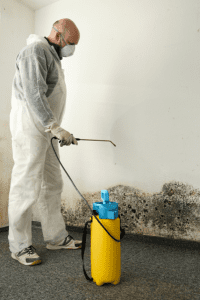
Mold remediationMold remediation is the process of identifying, removing, an... More professional
It is important to address any basement moisture problems right away so that you can avoid further damage. If you see signs of water damage in your home such as high humidityHumidity is the amount of moisture or water vapor present in... More, cracks in the foundation, issues with landscaping causing water to come toward your home instead of away from it, or dirty gutters that are not draining properly, you should react right away to address these issues. Proper maintenanceMaintenance is the routine care, inspection, and repair of a... More of your home will ensure that you do not have issues with moisture in your basement which can cause major damage to the structureStructure refers to the framework or components of a buildin... More of your home.
When it comes to maintenanceMaintenance is the routine care, inspection, and repair of a... More, you will need to make sure to clean and maintain your gutters, fill any gaps in your foundation with a proper sealant, fix your landscaping if it was done improperly so that you can protect your foundation from damage, and use dehumidifiers in your home if moisture is too high. If you’ve done everything possible to fix the moisture in your basement and you were unable to do so, it may be time to call in the water mitigation professionals.
If you have water damage or moldMold is a type of fungus that grows in damp or humid conditi... More in your basement due to moisture issues, make sure to call the professionals to get it addressed right away. Water damage restoration experts use advanced extraction and dehumidificationDehumidification is the process of reducing and controlling ... More equipment to fully dry your basement, and they can help identify and address the source of the moisture.










